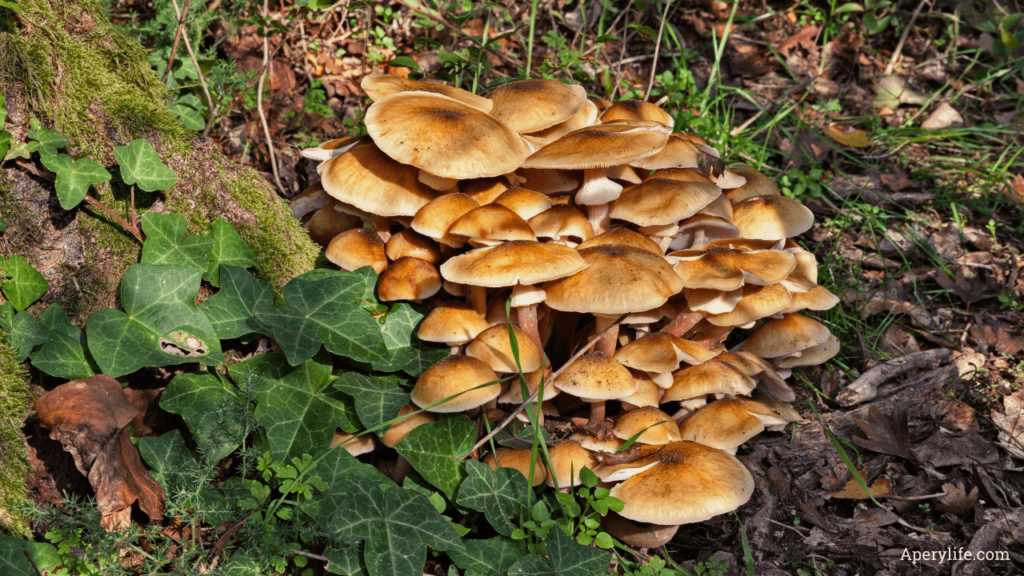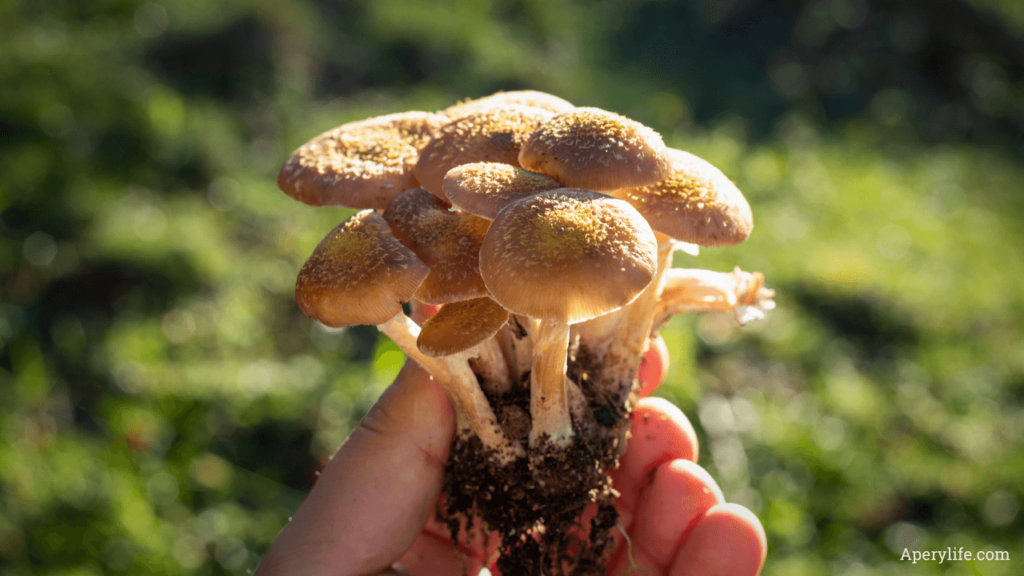Introduction
Chiodini (Armillaria mellea) are among the most well-known and appreciated mushrooms for mycology enthusiasts. With their bold flavor and distinctive texture, chiodini mushrooms lend themselves to numerous culinary preparations. They grow in large clusters on tree stumps and trunks, especially in autumn, and are a real treat for those who love mushrooms with a strong, characteristic taste.
Characteristics of Chiodini
Chiodini can be recognized by:
- Cap: Usually brown or beige, measuring between 2 and 10 cm. The surface can be smooth or slightly scaly.
- Stem: Slender, elongated, and fibrous, lighter in color than the cap. An annulus (ring) is present near the top of the stem, where it attaches to the cap.
- Flesh: White or slightly pinkish, with a firm consistency.
- Habitat: Grows in large clusters on stumps, roots, and tree trunks, often in damp, shaded environments.

Nutritional Properties and Benefits
In addition to their robust flavor, chiodini also offer some nutritional benefits:
- Protein: Like many mushrooms, chiodini provide plant-based proteins, useful in a balanced diet.
- Fiber: Helps support digestion and intestinal regularity.
- Vitamins and Minerals: Contain B-group vitamins as well as minerals like iron and potassium, essential for wellbeing.
- Low Fat Content: Ideal for those on a low-calorie diet.
Culinary Uses
Chiodini mushrooms are highly appreciated in many traditional and modern recipes:
- Preserved in Oil: One of the most classic preparations, allowing for long-term storage.
- Sauces for Pasta and Risotto: Perfect for seasoning hearty autumn first courses.
- Side Dishes and Frittatas: Excellent sautéed with garlic and parsley, or added to omelets and casseroles.
- Pairings: They go well with red meats, game, and polenta.

How to Harvest Chiodini
Gathering chiodini requires knowledge and caution:
- Harvest Season: Mainly from autumn to early winter, depending on the climate.
- Equipment: Use a sharp knife to cut the stem without damaging the mycelium.
- Identification: It is crucial to distinguish chiodini from toxic or inedible species. In case of doubt, consult an expert mycologist.
- Precooking: Chiodini must always be boiled before final cooking, as they contain heat-sensitive substances that may cause gastrointestinal upset.
Fun Facts About Chiodini
- Parasitic Fungi: Chiodini are often considered parasitic fungi, as they can infect and damage host trees.
- Size Records: Some colonies of Armillaria mellea are known to be among the world’s largest living organisms, spanning several hectares of forest.
- Ecological Importance: Though parasitic, they also contribute to wood decomposition, playing a role in the nutrient cycle of the forest.
Precautions and Tips
- Boiling: It is essential to boil chiodini for at least 15-20 minutes before cooking them further to eliminate heat-sensitive toxins.
- Moderation: Eat in moderate quantities, as excessive mushroom consumption can cause digestive difficulties.
- Storage: If not consumed immediately, they can be dried, frozen, or preserved in oil or vinegar.
- Expert Mycologist: When in doubt about identification, it is always best to consult a specialist.
Conclusion
Chiodini mushrooms have a bold flavor and a unique charm, perfect for those who want to explore new autumnal flavors. Harvesting them requires experience and care, but the reward of preparing them properly at the table is well worth the effort. From traditional recipes to creative dishes, chiodini mushrooms bring a unique taste to meals, merging the richness of the forest with home cooking.
All rights reserved © Copyright Aperylife.com